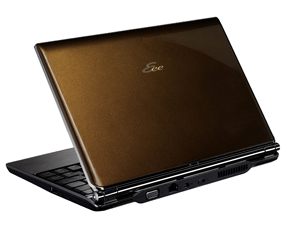IDC Taiwan Announces Top-10 ICT Predictions in 2010
Micro-projector to open new application market
2010/02/05 | By Quincy LiangIDC Taiwan, the local subsidiary of the premier global provider of market intelligence, advisory services, and events for the information technology (IT), telecom, and consumer technology markets, recently publicized its top-10 predictions for the information and communication technology (ICT) industry in Taiwan for 2010.

The global economy is gradually recovering, and enterprises are expected to enter into the new growth phase. IDC Taiwan forecasts that total IT spending in Taiwan will reach US$6.135 billion in 2010, including US$3.82 billion for hardware and US$1.48 billion for software.
The local subsidiary says that the overall economic condition has gained clear recovery, in which enterprises will gradually elevate IT spending to generate more business opportunities in the market. Some new and hot issues, such as cloud computing, green IT etc. will change traditional procurement concepts, while the rapidly expanding Internet applications, such as micro-blogs, twittering, community media etc., are also changing the corporate marketing modes. In conjunction with the technology transformation and innovation, ICD Taiwan says, businesses are obliged to change to meet growing demands in the next 10 years.

The following are the top-10 IDC predictions that will shape the ICT industry in Taiwan in 2010:
1. The ICT spending in Taiwan will grow 4.3% year-on-year (YoY) in 2010, and the IT transformation will lead enterprises into the new Internet economy. Some hot issues on the island include cloud computing, virtualization, green IT etc. Hottest sales channels include community media and micro-blogs; while hot consumer products are PICO (pocket projector), three-dimension (3D) TV etc.
2. 2010 is the starting year of cloud-computing services. IDC Taiwan deems that as one of the hottest issues on the island, cloud computing will take this year with many big ICT companies continuously push related services such as cloud infrastructure, cloud platforms, cloud applications etc.
The formation of the cloud computing services in Taiwan will let cloud-computing business-process-as-a-service enter into various industries, which will accelerate to utilize technology platforms to push cloud-computing services. The constitution of private cloud will proceed simultaneously with the public cloud, and through the virtualization techniques both private and public clouds will march forward to an integration trend that will change the conventional mode of IT-infrastructure construction by enterprises.
3. Enterprises will rely more on business analytics solutions for lowering operation risks. Decreased exports and unfavorable overall business climate will force domestic enterprises to re-evaluate their IT-investment priorities, IDC Taiwan says. Enterprises anticipate using more solutions with stronger analytical functions for better controlling corporate operation conditions.
IDC Taiwan predicts that the domestic demand for business analytics solutions will grow clearly in 2010. Such solutions are different from basic business intelligence by providing not only sales/shipment records, but also advanced analytical techniques such as data mining or statistics models, so as to support enterprises' market forecasts.
The business analytics has a wide application range, including both vertical functions (personnel, sales, marketing analysis etc.) and vertical applications (supply-chain integration, market feedback collection and analysis, production planning etc.).
4. NB PC still the market focus and cost/performance (C/P) value matters. The overall IT hardware market is showing some trends: the market share of desktop PCs is forecasted to fall from about 70% several years ago to only about 50% in 2011. The netbook (mini-note PC) was debuted in 2008, enjoyed a more than 200% shipment growth in 2009, and is expected to continue to maintain stable shipment increase in 2010, in which such portable computing device will win 20% to 30% penetration rate in overall notebook PC market.
However, IDC Taiwan says, the netbooks will face some challenges ahead, including lower profit margins, high competitive pressure from CULV (Consumer Ultra Low Voltage) models, and telecom companies' relatively-conservative bundled-packaging promotions etc. The local subsidiary predicts that CULV notebooks, with advantages of low prices, lightweight and thinness, and low power consumption etc., will continue to gain market share and account for about 20% of the overall notebook PC sector in 2010.
The PC market will be driven by a new force coming from social networking. New communities networks such as Facebook, drive people to spend more time in front of PCs. IDC Taiwan believes that larger screen sizes and higher performance PCs will naturally be more user-friendly to meet demands wanted by frequent PC users, with such demand expected to raise sales of traditional (larger-screen) and 22-inch-or-larger monitors.
5. Touch-control function to be more popular. Both consumers and harried businesspeople generally want faster speed, more intuitive and convenient inputting when receiving real-time information anywhere, anytime, demands that can be met by touch-controls. IDC says that such trend in 2010, including over half of smartphones, will be touch-function equipped.
IDC Taiwan points out that more and more IT hardware and consumer electronics products will adopt touch-control interfaces in 2010, while an increasing number of new operation modes will be introduced, generating new chances for hardware makers to differentiate products. In addition to hardware makers, software developers are also expected to benefit from touch functions thanks to demand for more fun, intuitive operation.
6. Demand for printing services rises in 2010. Many printer makers typically judge operational performance by shipments of machines, consumption of peripheral materials. The global meltdown has forced many businesses to reduce capital spending, one way of which being to deemphasize the "more paper the better" syndrome-reducing photocopying, replication and printing. Such cost-cutting has significantly impacted shipments of printers and peripherals since late 2008, forcing printer makers to develop other value-added services to create new niches and widen profit margins.
Printing management service is a savvy move amid the recovering global economy, for its ability to effectively control operational cost and upgrade in-house work efficiency. And such service is expected to stimulate enterprises' purchase willingness.
7. Telecom service market to introduce diversified modes. In the already very mature telecom market in Taiwan, newcomers, such as WiMax and cable-TV companies, however, have been constantly trying to provide more choices for consumers. IDC Taiwan says that fierce competitions and technology evolution will drive local telecom market into an even-multiplied era in 2010.
In the new year, IDC Taiwan predicts, the telecom market and operators will break the traditional operation scopes and enter into multiplied operation modes, including digital-content service, cloud-infrastructure construction, software application marketplace, high-quality audio/video entertainment services, family life-information platform service etc.
8. Application services spark cellphone market. In Taiwan, a mature cellphone market, cellphone brands are expected to target replacement purchasers rather than new phone buyers. Most cellphone brands tried in the past to focus on new functions or formats, such as GPS navigation, phone-camera pixels etc. to develop sales, a strategy that is proving to be less effective.
Developers of software-enabled new cellphone application services and business models will be able to direct market growth, IDC Taiwan says, with such result due to lower mobile broadband connection fees, added bandwidth, enhanced handset computing ability, and driven by telecom carriers and software developers.
9. Higher shipments of LED-backlit monitors and TVs. IDC Taiwan says that the price gap between traditional cold cathode ray fluorescent lamps (CCFL) and LED backlight units has been narrowing, hence enabling higher sales of LED-backlit monitors and LCD TVs.
However, the local subsidiary predicts that rapidly increasing demand from downstream makers will lead to supply shortage of LED backlight modules and limit the rapid increase of market shares of LED-backlight monitors and TVs. As the profit margins of LED-backlit TV panels are higher than that of monitor panels, thin film transistor-liquid crystal display (TFT-LCD) suppliers are expected to target the former application market as their top priority.
IDC predicts that the penetration of LED-backlit monitors in 2010 global market will reach 14.6%, while that of LCD TVs about 3.8% (compared to 1.6% in 2009).
10. Micro projector opens new applications market. Driven by commercialization of micro-projectors in Taiwan in 2009, as well as companies in Taiwan promoting such products, IDC Taiwan says micro-projection function is expected to open a new application market.
IDC Taiwan predicts, while the micro-projector function continues to be installed on increasingly more 3C (computer, communication, and consumer electronics) products in 2010, the popularity of such technology will be a function of variations in price and technology advancement.
Micro projectors are expected to gain in multi-functionality as such technology is matched to specially-built software, enabling micro-projectors to be more effectively integrated into multimedia computing devices, even achieving multi-functional mobility.




